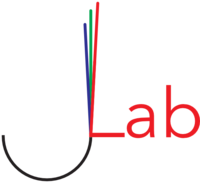TEACHING
Active Courses
EPS 53: Marine Geochemistry
EPS 53: Marine Geochemistry
Description: An introduction to low temperature biogeochemistry. We will focus on key biogeochemical elements and look to understand the linkages between the biosphere, atmosphere and hydrosphere. The course begins with a description of marine geochemistry (alkalinity and chemical fluxes) and works toward understanding isotopic fractionation and what it can tell us about the environment. We will explore biogeochemistry over a range of physical and temporal scales.
Note: This course includes a weekly two-hour lab to be arranged and prepares students for EPS 187. This course fulfills the EPS sub-discipline requirement of either Oceans and Atmosphere(s) or Earth History and Geobiology. Given in alternate years.
EPS 56: Geobiology and the History of Life
EPS 56: Geobiology and the History of Life
Description: Within our solar system, Earth is distinguished as the planet with life. Life was born of planetary processes, has been sustained for some four billion years by planetary processes, and through time has emerged as a set of planetary processes that is important in its own right. In this course we will investigate the ways that earth and life interact, focusing in particular on the biogeochemical cycles of major elements. This will provide a framework for interpreting the history of life reconstructed from fossils and phylogeny.
EPS 189: Analytical and Field Methods in Geobiology
EPS 286: Stable Isotope Fractionation in Multiple Isotope Systems
E-PSCI 286: Stable Isotope Fractionation in Multiple Isotope Systems
Course Description: Stable isotope systems serve as one of our most powerful tools in reconstructing both Earth History and environmental/climatic change over nearly all timescales. These isotope systems are driven by basic physical chemical principles that if understood, allow even more to be drawn from core isotopic systems (namely the biogeochemical elements – C, H, N, O, S). Further, advances in mass spectrometry now allow for site-specific isotopic determinations, as well as the quantification of trace isotope bonding (clumping). This course will begin with a quick but rigorous review of the chemistry underpinning equilibrium and kinetic isotope effects, before moving to survey the systematics that govern the most popular low temperature isotope systems. From there, the bulk of the course will target new and emerging isotopic targets such as clumping in O2 and methane.
EPS 286r: Current Topics in Biogeochemistry I: Biological and Inorganic Stable Isotope Systematics
EPS 286r: Current Topics in Biogeochemistry I: Biological and Inorganic Stable Isotope Systematics
Description: This is a reading class aimed at touring the literature on light stable isotope systematics. Topics covered will range from classic applications in geology (diagenetic and high temperature exchange), through to more novel isotope systems (clumping, 17O, etc.) and applications in biological systems (for instance, those effects associated with RuBiSCo). Topics covered will also flex with the interest of the enrolled students.
Prerequisite: EPS 186 and 187 or equivalent; or permission of instructor.
EPS 287: Low Temp Biogeochemistry II: Modern and ancient biogeochemical processes
EPS 287: Current Topics in Biogeochemistry II: Role of he Biological Pump in the Carbon Cycle
Description: An intensive reading course that will compare modern oceanographic approaches to the biological pump with concepts of the size and function of the biological pump over geologic time. We will review the carbon cycle; carbon, nitrogen, and oxygen isotope proxies; and will stress simple calculations and limited box models. This will be a seminar class focused on discussion rather than lecture. Assessment will be based on participation, several short problem sets, and a term paper.
Retired Courses
EPS 107: Environmental Geochmistry
Description: origin, evolution, dispersal, paleoecology and geologic history of the major groups of the plant kingdom. Laboratory study of representative groups, living and fossil.
Note: This course is no longer cross-listed and now offered as OEB 107.
Prerequisite: OEB 10 or permission of instructor
EPS186: Low Temperature Geochemistry I: Intro to Biogeochemical Cycles
EPS 186: Low Temperature Geochemistry I: Intro to Biogeochemical Cycles
Description: An introduction to low temperature biochemistry. We will focus on key biogeochemical elements and look to understand the linkages between the biosphere, atmosphere and hydrosphere. The course begins with a description of marine geochemistry (alkalinity and chemical fluxes) and works toward understanding isotopic fractionation and what it can tell us about the environment. We will explore biogeochemistry over a range of physical and temporal scales.

